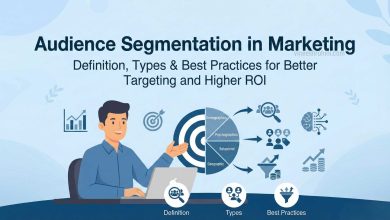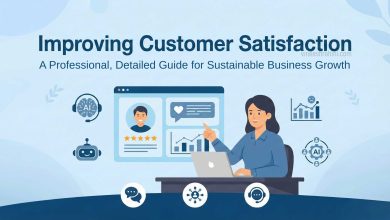Digital Marketing vs Affiliate Marketing
Introduction
In today’s digital age, businesses and marketers have a wide array of tools and strategies at their disposal to reach and engage with their target audience. Two prominent methods in the realm of online marketing are digital marketing and affiliate marketing. While both aim to promote products or services, they differ in terms of approach, goals, and execution. In this 3000-word essay, we will delve into the intricacies of digital marketing and affiliate marketing, comparing and contrasting their key aspects to help you understand when and how to use each approach effectively.
I. Digital Marketing: An Overview
Digital marketing encompasses a broad spectrum of online strategies and tactics employed by businesses to promote their products or services. It leverages various digital channels and platforms to connect with the target audience and drive brand awareness, engagement, and conversions. Key components of digital marketing include:
- Search Engine Optimization (SEO): Optimizing website content to rank higher in search engine results pages (SERPs) and improve organic visibility.
- Social Media Marketing: Using social media platforms like Facebook, Twitter, Instagram, and LinkedIn to connect with audiences, share content, and run targeted advertising campaigns.
- Content Marketing: Creating and distributing valuable, relevant, and consistent content to attract and retain a specific audience.
- Email Marketing: Sending targeted emails to subscribers with the aim of nurturing leads, promoting products, and maintaining customer relationships.
- Pay-Per-Click (PPC) Advertising: Running paid advertising campaigns on platforms like Google Ads and Bing Ads to drive traffic and conversions.
- Display Advertising: Placing visual ads on websites, apps, or social media platforms to reach a broader audience.
- Affiliate Marketing: Collaborating with affiliates to promote products or services in exchange for commissions on sales generated.
II. Affiliate Marketing: An Overview
Affiliate marketing is a performance-based marketing strategy that relies on partnerships between businesses (merchants or advertisers) and affiliates (publishers or marketers). Affiliates promote the merchant’s products or services and earn a commission for each sale, lead, or action generated through their marketing efforts. Key components of affiliate marketing include:
- Merchants: These are businesses that have products or services they want to promote through affiliate partnerships. Merchants provide affiliates with marketing materials and tracking tools.
- Affiliates: Affiliates can be individuals or companies that sign up for affiliate programs to promote the merchant’s offerings. They use various marketing methods, such as websites, blogs, social media, email, and paid advertising, to drive traffic and conversions.
- Affiliate Networks: Some affiliate marketing programs operate through intermediary networks that facilitate the relationship between merchants and affiliates. These networks offer tracking, reporting, and payment solutions.
- Commission Models: Affiliate marketing employs different commission models, including pay-per-sale, pay-per-lead, and pay-per-click. The choice of model depends on the merchant’s goals and industry.
III. Comparison of Key Aspects
Now, let’s compare digital marketing and affiliate marketing in various aspects:
- Control and Ownership:
- Digital Marketing: Businesses have full control over their digital marketing efforts, including website content, social media profiles, and advertising campaigns. They own and manage their digital assets.
- Affiliate Marketing: While merchants maintain control over their products or services, affiliates have autonomy in their marketing strategies. Affiliates often own their marketing channels, such as websites or social media accounts.
- Cost Structure:
- Digital Marketing: Businesses bear the cost of digital marketing efforts, including advertising spend, content creation, and software/tools.
- Affiliate Marketing: Affiliates incur marketing costs, such as website hosting and advertising, while merchants pay commissions only when desired actions (e.g., sales) occur.
- Risk:
- Digital Marketing: Businesses assume the financial risk associated with advertising campaigns, and success is not guaranteed. Campaigns may or may not yield positive ROI.
- Affiliate Marketing: Merchants share the risk with affiliates since commissions are performance-based. Merchants pay for results rather than upfront costs.
- Scalability:
- Digital Marketing: Scalability depends on budget constraints and resource availability. As businesses invest more, they can potentially reach a larger audience.
- Affiliate Marketing: Scalability depends on the ability to recruit and manage affiliates effectively. Expanding the affiliate network can lead to increased reach.
- Audience Reach:
- Digital Marketing: Businesses can target a broad or narrow audience based on their marketing objectives and budget. They have direct access to their audience through various digital channels.
- Affiliate Marketing: Affiliates often have specific niche audiences or customer segments they cater to. Merchants can tap into these segments by partnering with relevant affiliates.
- Measurement and Analytics:
- Digital Marketing: Robust tracking and analytics tools allow businesses to measure the performance of their campaigns, track conversions, and optimize strategies.
- Affiliate Marketing: Tracking and attribution tools are crucial for accurately measuring the contributions of different affiliates and campaigns.
- Time to Results:
- Digital Marketing: Results in digital marketing can vary widely depending on factors like SEO competitiveness, ad targeting, and content quality. It may take time to see significant ROI.
- Affiliate Marketing: Affiliates with established audiences can generate results relatively quickly, as they promote products or services to their existing followers.
IV. When to Choose Digital Marketing
Digital marketing is a suitable choice when:
- The business wants full control over its marketing channels and content.
- There is a budget for upfront marketing costs, such as advertising spend.
- The goal is to build brand awareness and engage with a broad audience.
- Measurable results, analytics, and data-driven optimization are essential.
- The business seeks long-term growth and is willing to invest in digital assets like a website and social media profiles.
V. When to Choose Affiliate Marketing
Affiliate marketing is a suitable choice when:
- The business wants to minimize upfront marketing costs and share performance-based commissions.
- There is a desire to tap into niche markets or specific audience segments.
- Partnerships with affiliates who have established credibility and influence are available.
- The business prefers a scalable approach to marketing through affiliate networks.
- Immediate results and sales are a priority.
VI. Case Studies: Real-Life Examples
To illustrate the practical application of digital marketing and affiliate marketing, let’s consider two case studies:
Case Study 1: Digital Marketing in E-commerce A global e-commerce retailer invests heavily in digital marketing to drive traffic to its online store. They run targeted social media ads, optimize their website for SEO, and engage in email marketing. Over time, their efforts result in increased website traffic, improved search engine rankings, and a growing customer base.
Case Study 2: Affiliate Marketing in Software Industry A software company launches an affiliate program, allowing tech bloggers and influencers to promote their software products. Affiliates create content, such as reviews and tutorials, and share affiliate links. The company pays commissions for each sale generated through these links. As a result, they experience a boost in product sales and gain exposure to tech-savvy audiences.
Conclusion
Digital marketing and affiliate marketing are two distinct approaches to online promotion, each with its advantages and considerations. Businesses must carefully evaluate their goals, resources, and target



